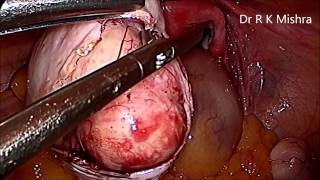Saturday, 20 December, 2025г.
















Где искать: по сайтам Запорожской области, статьи, видео ролики
пример: покупка автомобиля в Запорожье
TeamCirisano Teaching Series: Ovarian Cancer Radical Surgery
The management of ovarian cancer has been previously premised upon advanced stages of disease at diagnosis. Typically, ovarian cancer is diagnosed at stages III and IV, when the tumor has already demonstrated spread beyond the primary site of origin within the ovarian capsule or skin ( epithelium ). Initial management generally included radical surgery to both remove all areas of visible tumor, and identify locations of spread for the purpose of directing additional treatment. The surgery is considered the first step in treatment for these advanced stages, and is usually followed by combination chemotherapy, meaning more than one drug, administered in 4-6 hour sessions at intervals of 3-4 weeks. The total number of treatments following initial surgical removal of the tumor is typically 6 cycles, and the total number of months under treatment approximates 5 months. The most remarkable impact on outcome has included higher survival rates with surgery followed by chemotherapy. The majority of patients treated with optimal surgical tumor removal and chemotherapy will achieve remission, defined as no detectable cancer cells remaining. This definition of remission is generally distinguished from cure, which is defined as a remission that lasts for 5 years or more. Additionally, the proportion of patients living well beyond 5 years despite treatment for recurrent disease has increased significantly with ongoing advances therapy options.
Теги:
robotic surgery da vinci robotic laparoscopy uterine cancer ovarian cancer cervical cancer uterine fibroids pelvic mass pelvic pain endometriosis uterine bleeding menorrhagia dysmenorrhea ovarian cyst BRCA1 mutation BRCA2 mutation hereditary cancer syndrome hereditary breast cancer frank cirisano team cirisano
Похожие видео
Мой аккаунт


 У вашего броузера проблема в совместимости с HTML5
У вашего броузера проблема в совместимости с HTML5


